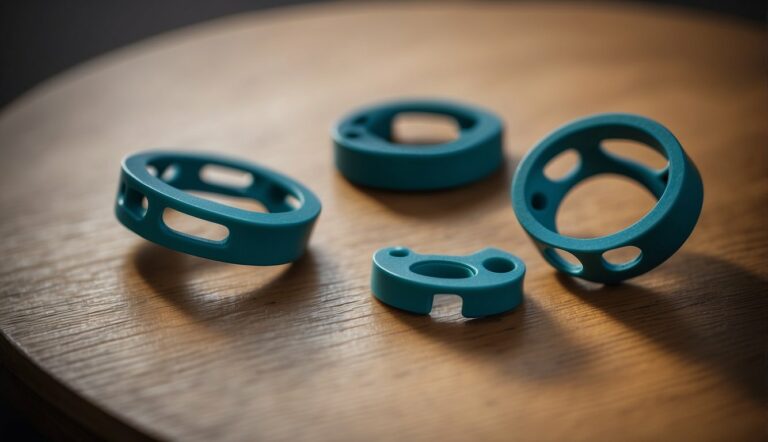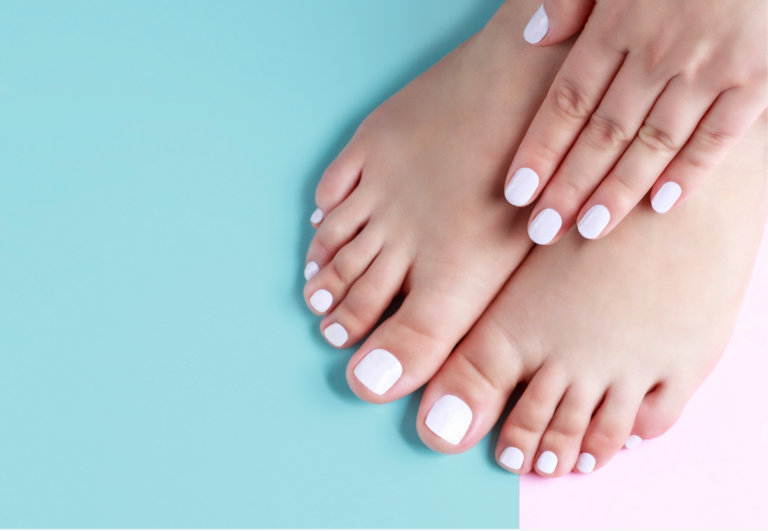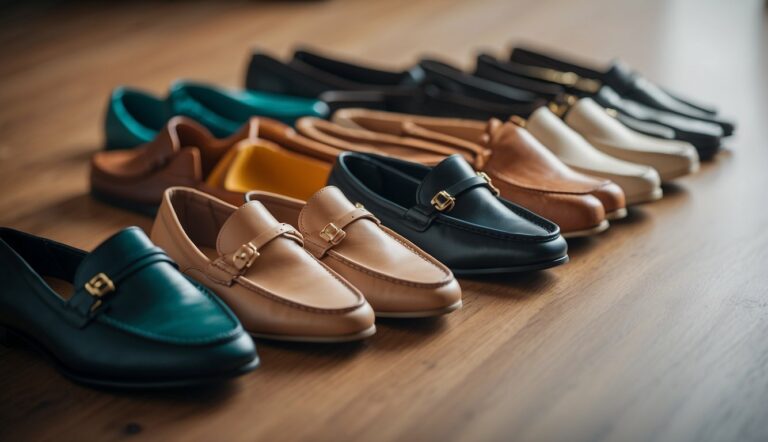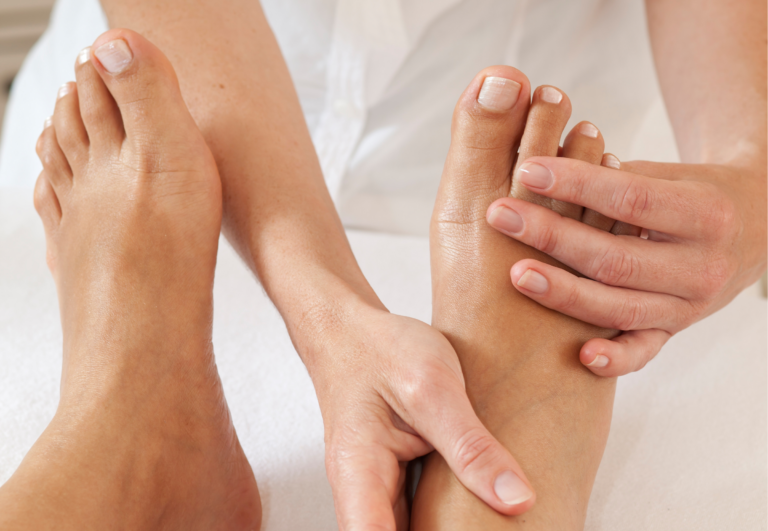Can Toe Spacers Be Used With Other Foot Care Products? Potential Complementary Care Solutions
Toe spacers have garnered attention for their role in maintaining foot health and providing comfort. As a toe spacer enthusiast, I’ve found that these simple devices can be integrated with a variety of foot care routines, and their benefits can be enhanced when used alongside other products. Many people, including myself, use toe spacers to help with issues like bunions, corns, and overlapping toes. These spacers work by gently realigning the toes to their natural position, promoting better balance and foot structure.
In my experience, the use of toe spacers doesn’t have to be an isolated part of foot care. They can actually complement other products such as moisturizers, orthotics, and cushioning pads. This symbiotic relationship amplifies comfort and aids in addressing common foot conditions more effectively. When selecting additional foot care products to use with toe spacers, it’s important to consider the compatibility and the specific needs of your feet.
Utilizing toe spacers within a broader foot care regimen can be highly beneficial for overall foot health. The key is to understand your own foot care needs and how various products can work together to alleviate discomfort. It’s always recommended to consult with a foot care specialist if you’re unsure about how to best incorporate these tools into your personal routine.
Can Toe Spacers Be Used With Other Foot Care Products?
Toe spacers can be used in conjunction with other foot care products, but it’s important to ensure compatibility and avoid overcorrection. Here’s how they can complement other products:
- Orthotic Insoles: Toe spacers can be used alongside orthotic insoles to provide a more comprehensive approach to foot alignment, as long as the shoes have enough room to accommodate both without causing excessive tightness or pressure.
- Moisturizers and Balms: Applying foot moisturizers or balms before using toe spacers can help keep the skin between the toes hydrated and prevent chafing.
- Compression Socks: Some people wear compression socks with toe spacers to enhance circulation, but it’s important to ensure that the socks do not compress the toes too much when used with spacers.
- Night Splints: For conditions like plantar fasciitis, toe spacers can be used in conjunction with night splints, provided there’s no discomfort or contraindication from a healthcare provider.
Before combining toe spacers with other foot care products, it’s recommended to consult with a healthcare professional, especially if you have existing foot conditions or concerns. They can provide guidance on the most beneficial and safe combination of foot care products for your individual needs.
Compatibility With Other Foot Care Products
Toe spacers are versatile tools that can be integrated into your foot care regimen. They work well with various foot care products to aid in alleviating discomfort and improving foot structure.
Concurrent Use With Orthotics
Orthotic devices, like insoles and arch supports, are designed to correct foot alignment and provide support. Toe spacers can be used alongside orthotics to help redistribute pressure more evenly across the feet. For instance, people with bunions may benefit from wearing both arch supports to manage their foot mechanics and toe spacers to give their toes additional room.
- Orthotics: Often compatible, supports alignment.
- Toe Spacers: Provides toe alignment, relieves pressure.
Combining With Footwear
Proper footwear should leave enough room to accommodate toe spacers without causing new pressure points. Shoes with wide toe boxes, especially those recommended for athletes or individuals with foot ailments, are an ideal match. Conversely, high heels and shoes with narrow toe boxes may not allow for sufficient space, potentially negating the benefits of toe spacers.
- Recommended Footwear: Wide toe boxes, flexible materials.
- Avoid: High heels, tight shoes.
Incorporating Into Exercise Routines
Integrating toe spacers into exercise routines can be beneficial. Simple stretches and exercises can be enhanced with the use of toe spacers to strengthen foot muscles. For example, wearing toe spacers during yoga can increase the effectiveness of poses geared towards improving foot strength and flexibility.
- Exercise Types: Yoga, stretches, strength-building.
- Benefit: Improved foot muscle function.
Application and Usage Guidelines
Toe spacers can offer temporary relief and assist in the recovery process for certain foot conditions when used correctly. Adhering to proper application and usage guidelines enhances their effectiveness and ensures safety.
Correct Sizing and Fitting
When it comes to toe spacers, sizing and fitting are crucial. I always recommend consulting with a podiatrist to determine the appropriate size for your needs. Here’s a breakdown of factors to consider:
- Individual Anatomy: Everyone’s feet are different; select a size that comfortably fits the gaps between your toes without causing overstretching or compression.
- Product Specifications: Always follow the manufacturer’s size chart or guidelines for the best fit.
Fit Check:
- Spacers should sit snugly between the toes.
- There should be no pinching or discomfort.
Duration and Frequency
Consistent usage of toe spacers can lead to better outcomes for foot health. However, moderation is key. Here’s what I recommend based on my experience:
- Initial Use: Start with shorter periods of time, about 10-15 minutes, to allow your feet to adjust.
- Progression: Gradually increase usage time to a few hours per day, as comfortable.
- Daily Routine: Incorporate toe spacers into your regular foot care routine for consistent benefits.
Usage Table:
| Week | Usage Time |
|---|---|
| 1 | 10-15 min |
| 2 | 30-60 min |
| 3+ | 1-3 hours |
Always follow any specific instructions provided with the product for optimal recovery and performance. Adjust the schedule as needed to meet your individual needs, and discontinue use if you experience any pain or adverse effects.
Potential Risks and Considerations
When considering the use of toe spacers alongside other foot care products, it’s important to be aware of possible complications and the importance of seeking professional guidance. Specific foot conditions and the types of materials involved, such as medical-grade gel used in some toe spacers, play a pivotal role in the safety and effectiveness of these products.
Possible Complications
Toe spacers are generally safe, but improper use can lead to issues. Here’s a breakdown of potential complications:
- Pain and Injury: Overuse or incorrect sizing can cause pain or even injury. Begin with short periods of use and gradually increase as recommended.
- Swelling and Inflammation: Ill-fitting toe spacers may lead to swelling and inflammation. Discontinue use if these symptoms occur.
- Aggravation of Pre-existing Conditions: If you have a deformity like a bunion, toe spacers can sometimes aggravate the condition instead of providing relief.
Seeking Professional Advice
I strongly suggest consulting with a podiatrist before incorporating toe spacers into your foot care regimen, especially if you have existing foot problems or deformities. Here are key reasons to consult a professional:
- Tailored Recommendations: A podiatrist can advise on correct use and whether toe spacers will benefit your specific condition.
- Comprehensive Treatment: They may suggest complementary treatments, ensuring a holistic approach to managing foot health.
- Expertise-Based Selection: The Journal of the American Podiatric Medical Association may offer insights into evidence-based practices for using toe spacers. A podiatrist is equipped to interpret such resources for the benefit of your foot health.
Quick Overview of Toe Spacers
Toe spacers are practical devices I use to promote proper toe alignment and to combat common foot ailments. They can be incorporated with other foot care products for comprehensive foot health management.
Types and Materials
Toe spacers come in various materials, including silicone, silicone gel, foam, and rubber. Silicone is a popular choice due to its durability and flexibility. Silicone gel is also common, providing a softer cushioning. Foam and rubber options offer varying degrees of firmness and support.
- Silicone: Durable, flexible, often reusable
- Silicone Gel: Soft, cushioning, comfortable
- Foam: Lightweight, varies in firmness
- Rubber: Firm, supportive
Function and Benefits
The primary function of toe spacers is to maintain proper toe alignment, which facilitates better posture and balance. They contribute to pain relief, enhance circulation, and can help with conditions like bunions, hammertoe, and plantar fasciitis. Moreover, they are designed to alleviate pressure, reducing the formation of corns and calluses.
- Alignment: Supports natural toe positioning
- Circulation: Encourages better blood flow
- Pain Relief: Alleviates discomfort from foot disorders
Common Conditions
Toe spacers often bring comfort and structural benefits for a variety of foot-related conditions. Bunions, a deviation of the big toe joint, can see improved alignment with regular use of toe spacers. Hammertoe, where the toe has an abnormal bend, also responds well to them. Additionally, toe spacers assist in the management of plantar fasciitis, reducing strain on the plantar fascia ligament.
- Bunions: Help realign the big toe
- Hammertoe: Reduce bending stress on the toe
- Plantar Fasciitis: Lessen ligament strain





